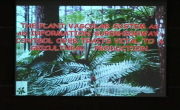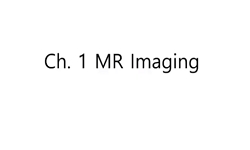Background and Purpose Neurofilament light chain (NfL) is a blood marker for neuroaxonal damage. We assessed the association between serum NfL and cerebral small vessel disease (SVD), which is highly prevalent in elderly individuals and a major cause...
http://chineseinput.net/에서 pinyin(병음)방식으로 중국어를 변환할 수 있습니다.
변환된 중국어를 복사하여 사용하시면 됩니다.
- 中文 을 입력하시려면 zhongwen을 입력하시고 space를누르시면됩니다.
- 北京 을 입력하시려면 beijing을 입력하시고 space를 누르시면 됩니다.
https://www.riss.kr/link?id=A105366268
-
저자
Marco Duering (University Hospital, Ludwig-Maximilians-University Munich, Munich, Germany) ; Marek J. Konieczny (University Hospital, Ludwig-Maximilians-University Munich, Munich, Germany) ; Steffen Tiedt (University Hospital, Ludwig-Maximilians-University Munich, Munich, Germany) ; Ebru Baykara (University Hospital, Ludwig-Maximilians-University Munich, Munich, Germany) ; Anil Man Tuladhar (Cognition and Behaviour, Radboud University Medical Center, Nijmegen, the Netherlands) ; Esther van Leijsen (Cognition and Behaviour, Radboud University Medical Center, Nijmegen, the Netherlands) ; Philippe Lyrer (University Hospital Basel, Basel, Switzerland) ; Stefan T. Engelter (Department of Neurology, University Hospital Basel, University of Basel, Basel, Switzerland) ; Benno Gesierich (University Hospital, Ludwig-Maximilians-University Munich, Munich, Germany) ; Melanie Achmüller (University Hospital, Ludwig-Maximilians-University Munich, Munich, Germany) ; Christian Barro (Biomedicine and Clinical Research, University Hospital of Basel, Basel, Switzerland) ; Ruth Adam (University Hospital, Ludwig-Maximilians-University Munich, Munich, Germany) ; Michael Ewers (University Hospital, Ludwig-Maximilians-University Munich, Munich, Germany) ; Martin Dichgans (University Hospital, Ludwig-Maximilians-University Munich, Munich, Germany) ; Jens Kuhle (Biomedicine and Clinical Research, University Hospital of Basel, Basel, Switzerland) ; Frank-Erik de Leeuw (Cognition and Behaviour, Radboud University Medical Center, Nijmegen, the Netherlands) ; Nils Peters (Department of Neurology, University Hospital Basel, University of Basel, Basel, Switzerland)

- 발행기관
- 학술지명
- 권호사항
-
발행연도
2018
-
작성언어
English
- 주제어
-
등재정보
KCI등재,SCIE,SCOPUS
-
자료형태
학술저널
- 발행기관 URL
-
수록면
228-238(11쪽)
-
KCI 피인용횟수
16
- 제공처
- 소장기관
-
0
상세조회 -
0
다운로드
부가정보
다국어 초록 (Multilingual Abstract)
Background and Purpose Neurofilament light chain (NfL) is a blood marker for neuroaxonal damage.
We assessed the association between serum NfL and cerebral small vessel disease (SVD), which is highly prevalent in elderly individuals and a major cause of stroke and vascular cognitive impairment.
Methods Using a cross-sectional design, we studied 53 and 439 patients with genetically defined SVD (Cerebral Autosomal-Dominant Arteriopathy with Subcortical Infarcts and Leukoencephalopathy [CADASIL]) and sporadic SVD, respectively, as well as 93 healthy controls. Serum NfL was measured by an ultrasensitive single-molecule array assay. We quantified magnetic resonance imaging (MRI) markers of SVD, i.e., white matter hyperintensity volume, lacune volume, brain volume, microbleed count, and mean diffusivity obtained from diffusion tensor imaging. Clinical characterization included neuropsychological testing in both SVD samples. CADASIL patients were further characterized for focal neurological deficits (National Institutes of Health stroke scale [NIHSS]) and disability (modified Rankin scale [mRS]).
Results Serum NfL levels were elevated in both SVD samples (P<1e-05 compared with controls) and associated with all SVD MRI markers. The strongest association was found for mean diffusivity (CADASIL, R2=0.52, P=1.2e-09; sporadic SVD, R2=0.21, P<1e-15). Serum NfL levels were independently related to processing speed performance (CADASIL, R2=0.27, P=7.6e-05; sporadic SVD, R2=0.06, P=4.8e-08), focal neurological symptoms (CADASIL, NIHSS, P=4.2e-05) and disability (CADASIL, mRS, P=3.0e-06).
Conclusions We found serum NfL levels to be associated with both imaging and clinical features of SVD. Serum NfL might complement MRI markers in assessing SVD burden. Importantly, SVD needs to be considered when interpreting serum NfL levels in the context of other age-related diseases.
참고문헌 (Reference)
1 Tombaugh TN, "Trail Making Test A and B: normative data stratified by age and education" 19 : 203-214, 2004
2 Smith SM, "Tract-based spatial statistics: voxelwise analysis of multi-subject diffusion data" 31 : 1487-1505, 2006
3 Charlton RA, "The cognitive profiles of CADASIL and sporadic small vessel disease" 66 : 1523-1526, 2006
4 Van der Elst W, "The Concept Shifting Test: adult normative data" 18 : 424-432, 2006
5 Gattringer T, "Serum neurofilament light is sensitive to active cerebral small vessel disease" 89 : 2108-2114, 2017
6 Rohrer JD, "Serum neurofilament light chain protein is a measure of disease intensity in frontotemporal dementia" 87 : 1329-1336, 2016
7 Disanto G, "Serum neurofilament light chain levels are increased in patients with a clinically isolated syndrome" 87 : 126-129, 2016
8 Traenka C, "Serum neurofilament light chain levels are associated with clinical characteristics and outcome in patients with cervical artery dissection" 40 : 222-227, 2015
9 Kuhle J, "Serum neurofilament light chain in early relapsing remitting MS is increased and correlates with CSF levels and with MRI measures of disease severity" 22 : 1550-1559, 2016
10 De Guio F, "Reproducibility and variability of quantitative magnetic resonance imaging markers in cerebral small vessel disease" 36 : 1319-1337, 2016
1 Tombaugh TN, "Trail Making Test A and B: normative data stratified by age and education" 19 : 203-214, 2004
2 Smith SM, "Tract-based spatial statistics: voxelwise analysis of multi-subject diffusion data" 31 : 1487-1505, 2006
3 Charlton RA, "The cognitive profiles of CADASIL and sporadic small vessel disease" 66 : 1523-1526, 2006
4 Van der Elst W, "The Concept Shifting Test: adult normative data" 18 : 424-432, 2006
5 Gattringer T, "Serum neurofilament light is sensitive to active cerebral small vessel disease" 89 : 2108-2114, 2017
6 Rohrer JD, "Serum neurofilament light chain protein is a measure of disease intensity in frontotemporal dementia" 87 : 1329-1336, 2016
7 Disanto G, "Serum neurofilament light chain levels are increased in patients with a clinically isolated syndrome" 87 : 126-129, 2016
8 Traenka C, "Serum neurofilament light chain levels are associated with clinical characteristics and outcome in patients with cervical artery dissection" 40 : 222-227, 2015
9 Kuhle J, "Serum neurofilament light chain in early relapsing remitting MS is increased and correlates with CSF levels and with MRI measures of disease severity" 22 : 1550-1559, 2016
10 De Guio F, "Reproducibility and variability of quantitative magnetic resonance imaging markers in cerebral small vessel disease" 36 : 1319-1337, 2016
11 Sing T, "ROCR: visualizing classifier performance in R" 21 : 3940-3941, 2005
12 Benjamin P, "Progression of MRI markers in cerebral small vessel disease: sample size considerations for clinical trials" 36 : 228-240, 2016
13 Behrens TE, "Probabilistic diffusion tractography with multiple fibre orientations: what can we gain?" 34 : 144-155, 2007
14 Wiseman SJ, "Plasma biomarkers of inflammation, endothelial function and hemostasis in cerebral small vessel disease" 40 : 157-164, 2015
15 Christensen RH, "Ordinal: regression models for ordinal data"
16 Wardlaw JM, "Neuroimaging standards for research into small vessel disease and its contribution to ageing and neurodegeneration" 12 : 822-838, 2013
17 Lu CH, "Neurofilament light chain: a prognostic biomarker in amyotrophic lateral sclerosis" 84 : 2247-2257, 2015
18 Vilar-Bergua A, "N-terminal pro-brain natriuretic peptide and subclinical brain small vessel disease" 87 : 2533-2539, 2016
19 Norgren N, "Monoclonal antibodies selective for low molecular weight neurofilaments" 21 : 53-59, 2002
20 Markus HS, "Markers of endothelial and hemostatic activation and progression of cerebral white matter hyperintensities: longitudinal results of the Austrian Stroke Prevention Study" 36 : 1410-1414, 2005
21 Gaiottino J, "Increased neurofilament light chain blood levels in neurodegenerative neurological diseases" 8 : e75091-, 2013
22 Duering M, "Incident lacunes preferentially localize to the edge of white matter hyperintensities: insights into the pathophysiology of cerebral small vessel disease" 136 : 2717-2726, 2013
23 Haller S, "Head motion parameters in fMRI differ between patients with mild cognitive impairment and Alzheimer disease versus elderly control subjects" 27 : 801-807, 2014
24 Archer KJ, "Glmnetcr: fit a penalized constrained continuation ratio model for predicting an ordinal response"
25 Williams DA, "Generalized linear model diagnostics using the deviance and single case deletions" 36 : 181-191, 1987
26 Pearce LA, "Effects of long-term blood pressure lowering and dual antiplatelet treatment on cognitive function in patients with recent lacunar stroke: a secondary analysis from the SPS3 randomised trial" 13 : 1177-1185, 2014
27 Zieren N, "Education modifies the relation of vascular pathology to cognitive function: cognitive reserve in cerebral autosomal dominant arteriopathy with subcortical infarcts and leukoencephalopathy" 34 : 400-407, 2013
28 de Laat KF, "Diffusion tensor imaging and gait in elderly persons with cerebral small vessel disease" 42 : 373-379, 2011
29 Wollenweber FA, "Cortical superficial siderosis in different types of cerebral small vessel disease" 48 : 1404-1407, 2017
30 Kuhle J, "Comparison of three analytical platforms for quantification of the neurofilament light chain in blood samples: ELISA, electrochemiluminescence immunoassay and Simoa" 54 : 1655-1661, 2016
31 Satizabal CL, "Circulating IL-6 and CRP are associated with MRI findings in the elderly: the 3C-Dijon Study" 78 : 720-727, 2012
32 Behrens TE, "Characterization and propagation of uncertainty in diffusion-weighted MR imaging" 50 : 1077-1088, 2003
33 Jonsson M, "Cerebrospinal fluid biomarkers of white matter lesions: cross-sectional results from the LADIS study" 17 : 377-382, 2010
34 Pantoni L, "Cerebral small vessel disease: from pathogenesis and clinical characteristics to therapeutic challenges" 9 : 689-701, 2010
35 van Norden AG, "Causes and consequences of cerebral small vessel disease. The RUN DMC study: a prospective cohort study. Study rationale and protocol" 11 : 29-, 2011
36 Schmidt R, "C-reactive protein, carotid atherosclerosis, and cerebral small-vessel disease: results of the Austrian Stroke Prevention Study" 37 : 2910-2916, 2006
37 van Dijk EJ, "C-reactive protein and cerebral small-vessel disease: the Rotterdam Scan Study" 112 : 900-905, 2005
38 Nagai M, "Association of prothrombotic status with markers of cerebral small vessel disease in elderly hypertensive patients" 25 : 1088-1094, 2012
39 Mattsson N, "Association of plasma neurofilament light with neurodegeneration in patients with alzheimer disease" 74 : 557-566, 2017
40 Harrison JK, "Assessment scales in stroke: clinimetric and clinical considerations" 8 : 201-211, 2013
41 Van Der Elst W, "Assessment of information processing in working memory in applied settings: the paper and pencil memory scanning test" 37 : 1335-1344, 2007
42 Voineskos AN, "Age-related decline in white matter tract integrity and cognitive performance: a DTI tractography and structural equation modeling study" 33 : 21-34, 2012
43 Baykara E, "A novel imaging marker for small vessel disease based on skeletonization of white matter tracts and diffusion histograms" 80 : 581-592, 2016
44 Kuhle J, "A comparative study of CSF neurofilament light and heavy chain protein in MS" 19 : 1597-1603, 2013
45 R Core Team, "A Language and Environment for Statistical Computing"
동일학술지(권/호) 다른 논문
-
Prevalence and Risk Factors of Cerebral Small Vessel Disease in a Chinese Population-Based Sample
- 대한뇌졸중학회
- Fei Han
- 2018
- KCI등재,SCIE,SCOPUS
-
Neuroprotectants in the Era of Reperfusion Therapy
- 대한뇌졸중학회
- Ángel Chamorro
- 2018
- KCI등재,SCIE,SCOPUS
-
Advances in Stroke Prevention in 2018
- 대한뇌졸중학회
- M. Edip Gurol
- 2018
- KCI등재,SCIE,SCOPUS
-
- 대한뇌졸중학회
- Anne I. Christensen
- 2018
- KCI등재,SCIE,SCOPUS
분석정보
인용정보 인용지수 설명보기
학술지 이력
| 연월일 | 이력구분 | 이력상세 | 등재구분 |
|---|---|---|---|
| 2023 | 평가예정 | 해외DB학술지평가 신청대상 (해외등재 학술지 평가) | |
| 2020-01-01 | 평가 | 등재학술지 유지 (해외등재 학술지 평가) |  |
| 2014-11-01 | 평가 | SCIE 등재 (기타) |  |
| 2013-01-01 | 평가 | 등재후보학술지 유지 (기타) |  |
| 2011-01-01 | 평가 | 등재후보학술지 선정 (신규평가) |  |
학술지 인용정보
| 기준연도 | WOS-KCI 통합IF(2년) | KCIF(2년) | KCIF(3년) |
|---|---|---|---|
| 2016 | 3.63 | 0.55 | 3.13 |
| KCIF(4년) | KCIF(5년) | 중심성지수(3년) | 즉시성지수 |
| 2.37 | 1.91 | 1.175 | 0.1 |






 KCI
KCI







